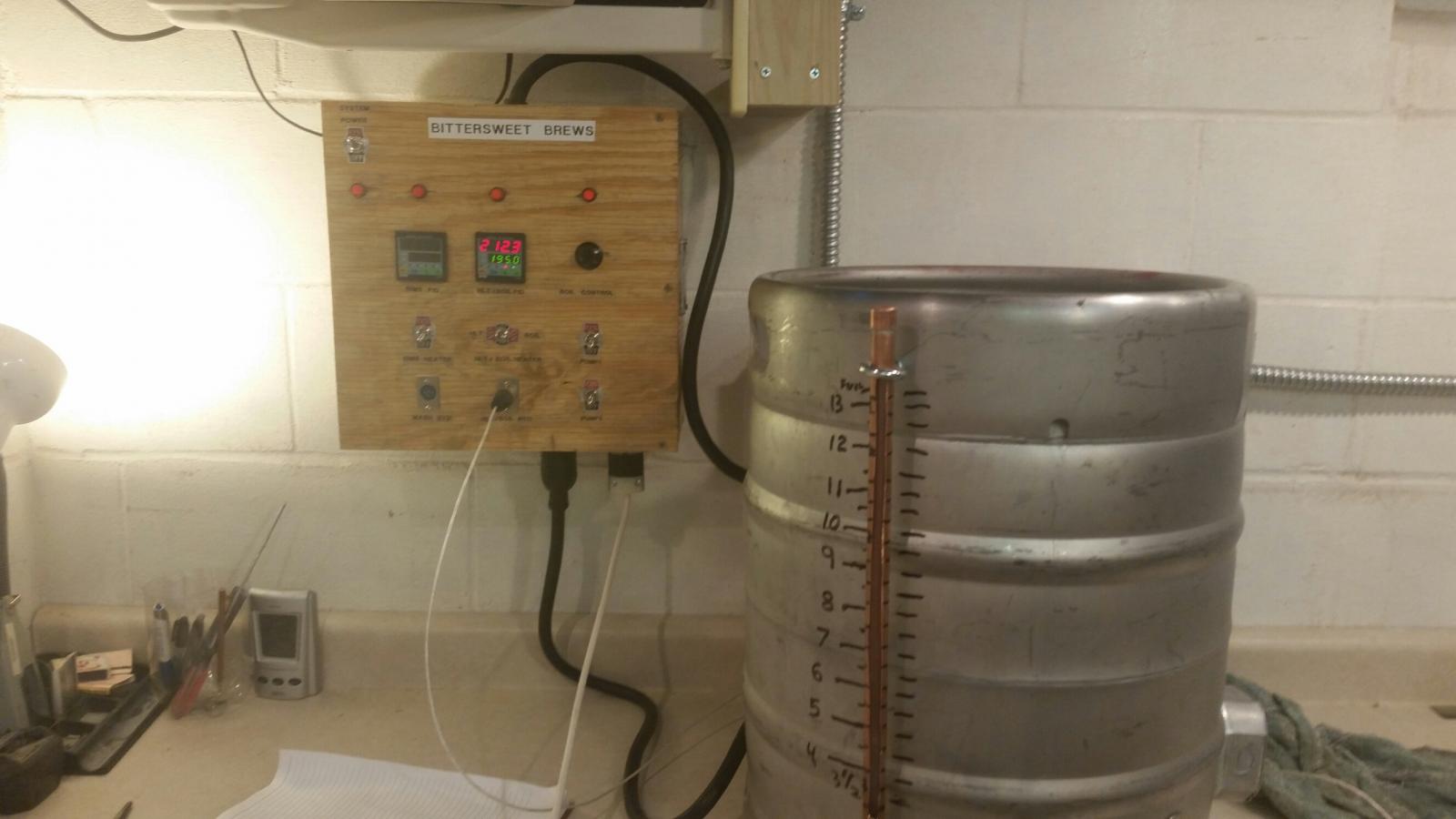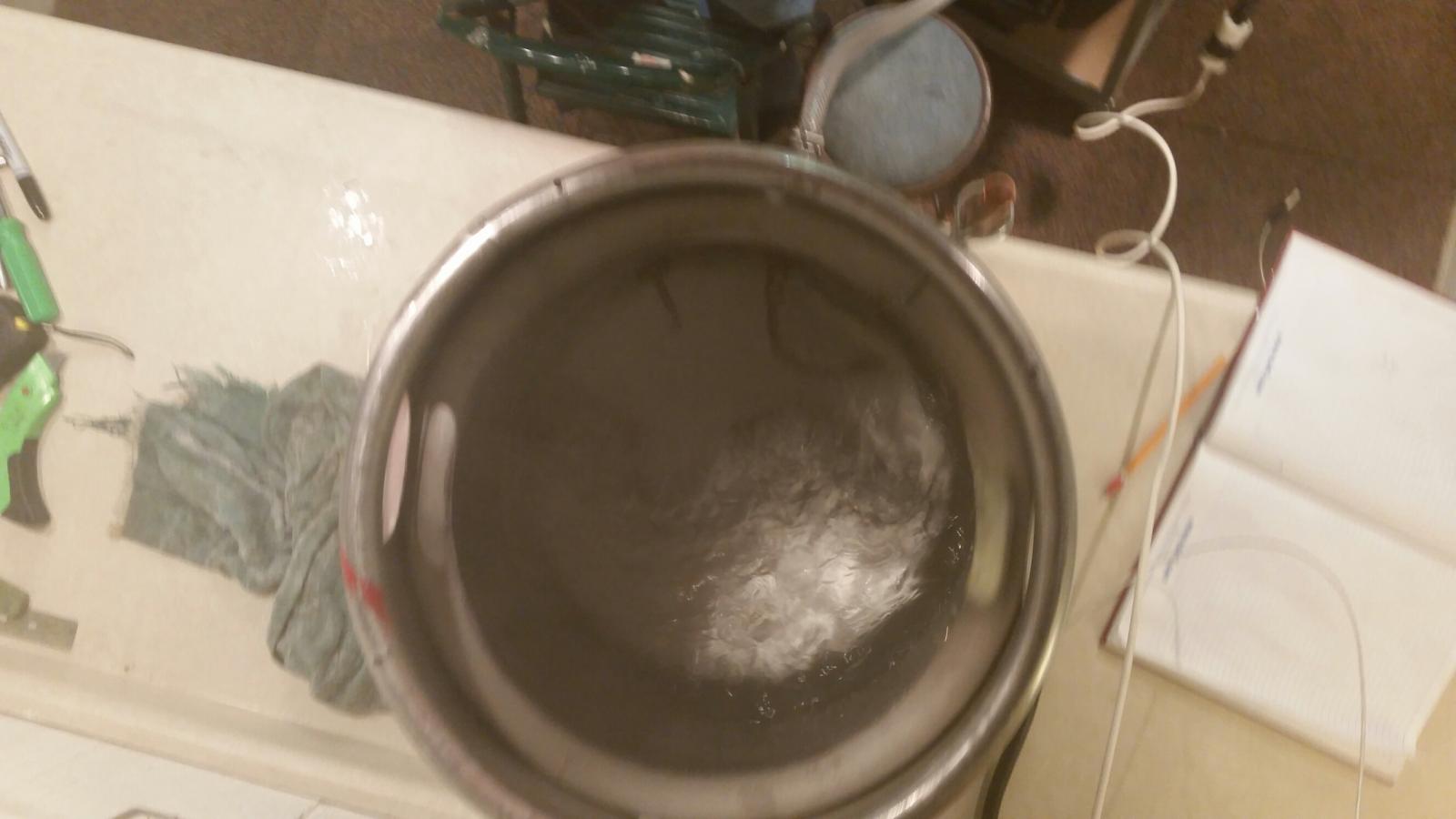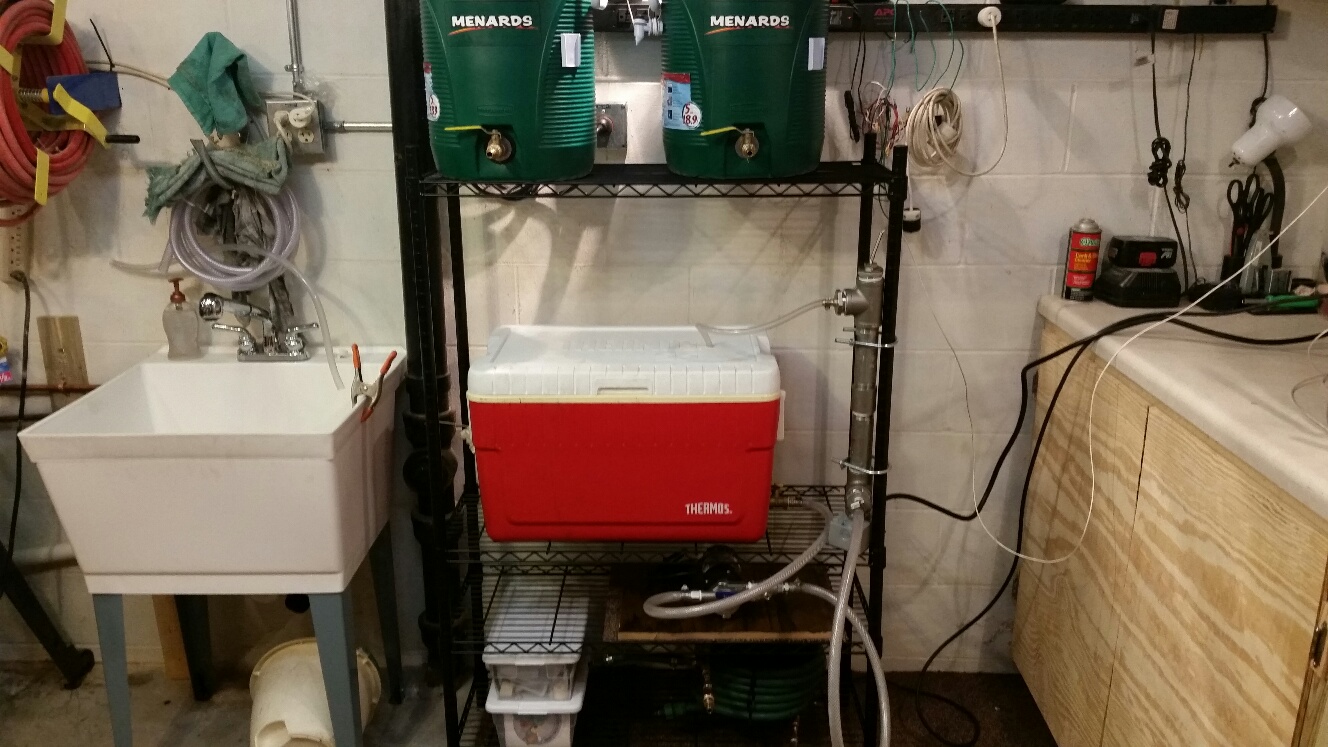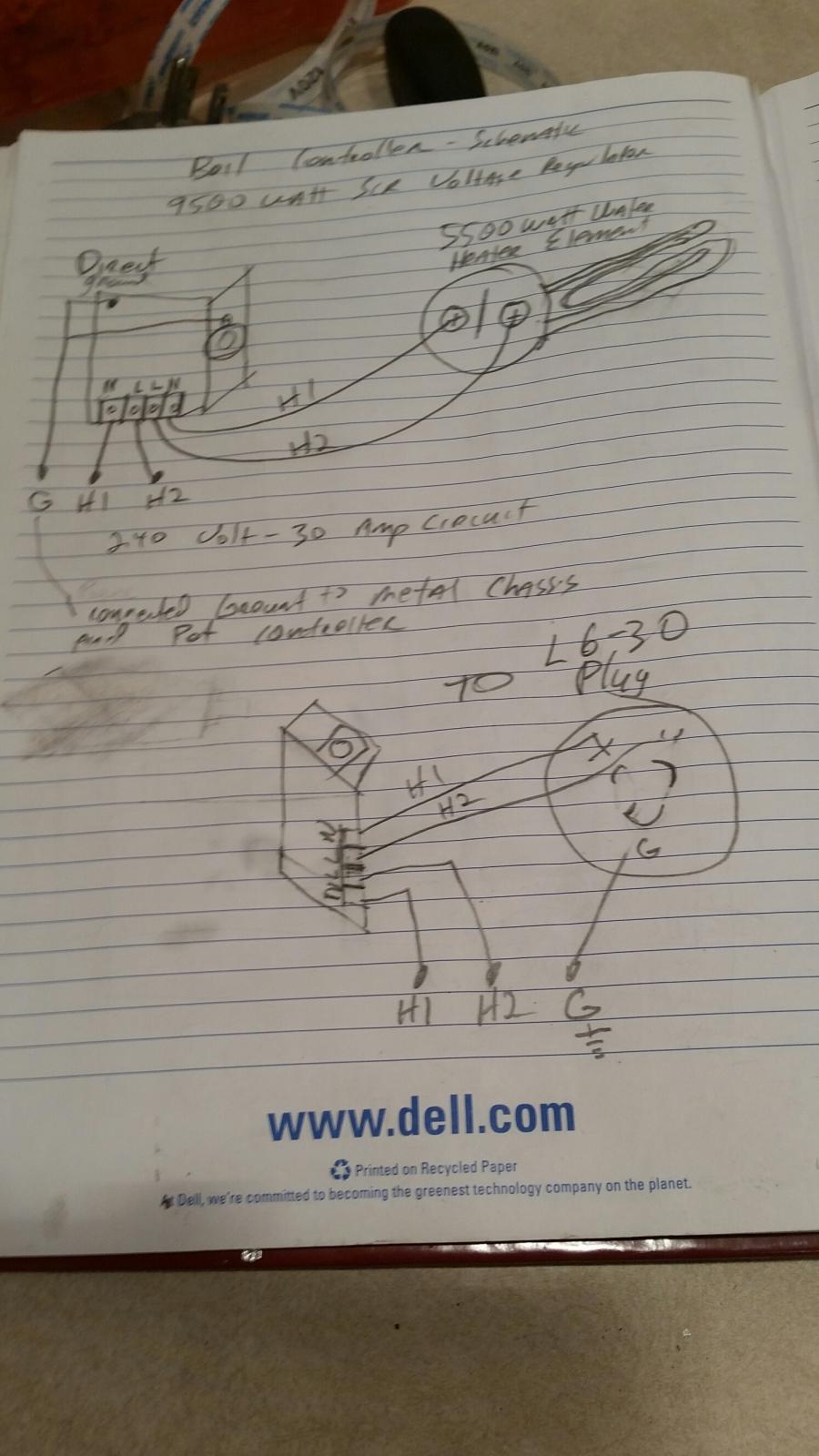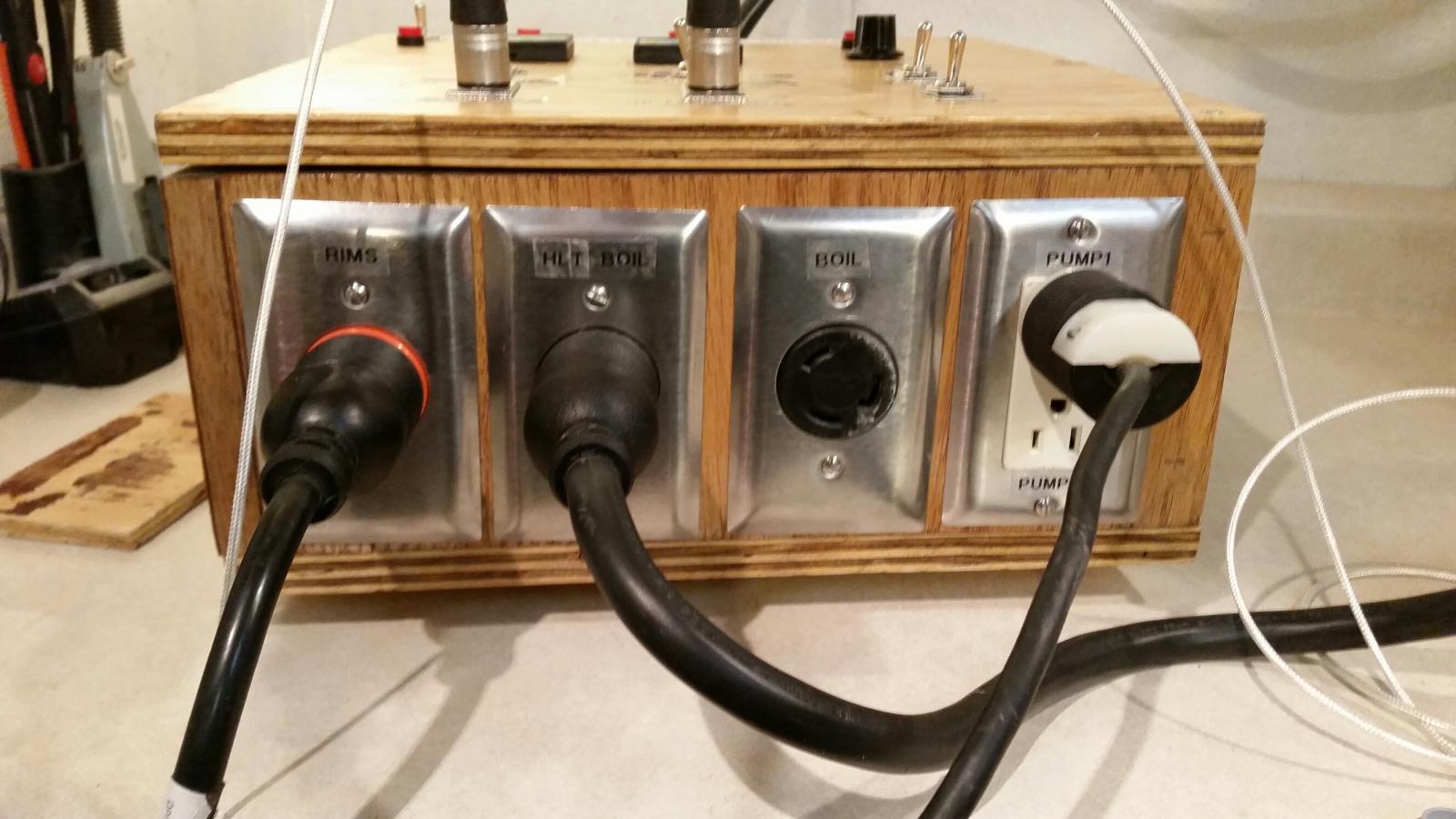BitterSweetBrews
Tim Trabold
OK, here is my system and what I want to do. I would appreciate some advice on feasibility and method.
I have always propane brewed but want to build an electric brewery because they are cool and it is getting cold outside. I have been collecting parts and working on preliminary tasks for a few months.
First my infrastructure. I am listing what I paid for stuff in case someone wants to total up what it will cost them ($300-$400, at least)
I have run a 240Volt, 30Amp, 4 wire circuit ($14 breaker) to a sub-panel in my future brewery (my workshop - 10Ga wire). The sub-panel is actually a Midwest Electric Spa Panel I got on ebay for about $34. I had the 10 gauge wire but it would have cost about $100 to purchase it. The panel came with a 240V/50Amp GFCI breaker and slots for 4 additional normal breakers (they are not protected by the GFCI breaker). I know that the 50amp GFCI breaker is more than the 30 Amp circuit I created - but I am using it for the GFCI. The breaker on the main panel will trip in an overload over the 30 amps it is wired for. I have added off of the sub-panel two 20 amp circuits, one on each leg of the 240 run from the main panel. On the 240v GFCI circuit I have a 30 Amp, 4 prong dryer outlet and an L6/30 Outlet. The brew controller will plug into one of these. On each of the 20 amp circuits ($8 for breakers) I have runs to a standard 20 Amp GFCI outlet ($10 ea) which is in front of an L5/20 outlet (I had a pull, but it would have cost about $11). I also have a previously installed 120V/20A GFCI circuit from the main panel in the same area that I could use if necessary.
Now my brewing Equipment. I have built most of this recently and haven't used it yet. So this is where some of my questions will come in.
I have a 50 liter keggle with a 5400 watt ULWD ripple element (Keg-$25, Element-$28). It will run at 240V. For now I plan on using it for heating strike and sparge water as well as a boil kettle.
I have a 54 quart cooler I use as a mash tun (had)
I have a SS RIMS tube with a 5400 ULWD fold over element and thermowell (about $60 in SS parts - $25-Element). It will run at 120V so as to not scorch the wort.
1 Chugger pump with SS head.($129)
Here are the parts I can use for my controller and about what I paid for them:
2 - MYPIN PD4 PIDs for RIMS and HLT (these are the model with manual control) $22 ea
1 - 9500W High Power SCR Electronic Volt Regulator Speed Controller Governor Dimmer for Boil Control $20 (I tested this by itself with the keggle and it works great).
2 - SSR-40DA 40A /250V W I/O 3-32VDC/24-380VAC & Heat Sink $8 ea
3 - MAGNECRAFT 92S7A22D-120A Relay,Power,6 Pin,DPST-NO,30A,120VAC $7 ea
4 - DPST Heavy Duty 20A Switches $2.25 ea
3 - DPDT Heavy Duty 20A Switches (ON-ON) $2.75 Ea
3 - DPDT Heavy Duty 20A Switches (ON-OFF-ON) $2.80 ea
1 - L5-20 120v outlet (I had it but they cost around $11)
1 - L6-30 240v outlet ($11)
1 - 120V/15A duplex outlet (I had it but they cost around $1)
3 - Thermocouples ($5 each)
3 - XLR Outlets and plugs ($10)
240V lights ($5)
Wiring panels ($8)
120V PC FAN (Free)
Misc. elect. - connectors, 10Ga cord, wire, etc. (maybe $20 total)
I plan on building a system based on the Instructable - "Electric Brewery Control Panel on the Cheap" by jmengel
I have some questions and I want to make some modifications. I would appreciate feedback.
1. Since I plan on using the keggle as both an HLT and boil kettle I am concerned with controlling these two functions. Is the manual mode on the MYPIN PIDs easy and quick enough to control and move temp up and down? I have the SCR controller/governor which works great to turn the burner up and down with the turn of a dial. I think using it may be quicker than the PID and lessen the chance of a boil-over while pushing buttons on the PID. What does anyone think about this? Is this an issue with PIDs?
2. If I were to put the SCR controller in the panel how and where in the circuit could I switch the element plug from PID to SCR? Can I just switch the element over from the PID?. Where can I insert the relay for this if I need one? Can I leave the PID on while running from the SCR Controller to use as a thermometer on the kettle without kicking the relays on. In other wordsm can I just turn PID control off and leave monitoring on?
3. Finally an important operational question, with both a 120v/5500 watt (1225 watt efective) RIMS circuit and a 240V/5500 watt HLT circuit, will I be able to run both of these elements at the same time? I could run a seperate cord for the RIMS to the previously installed 120V/20Amp circuit but I don't really want two cords coming out of my controller box and don't want to build a second one.
I would appreciate any advice.
Thanks.
Tim
I have always propane brewed but want to build an electric brewery because they are cool and it is getting cold outside. I have been collecting parts and working on preliminary tasks for a few months.
First my infrastructure. I am listing what I paid for stuff in case someone wants to total up what it will cost them ($300-$400, at least)
I have run a 240Volt, 30Amp, 4 wire circuit ($14 breaker) to a sub-panel in my future brewery (my workshop - 10Ga wire). The sub-panel is actually a Midwest Electric Spa Panel I got on ebay for about $34. I had the 10 gauge wire but it would have cost about $100 to purchase it. The panel came with a 240V/50Amp GFCI breaker and slots for 4 additional normal breakers (they are not protected by the GFCI breaker). I know that the 50amp GFCI breaker is more than the 30 Amp circuit I created - but I am using it for the GFCI. The breaker on the main panel will trip in an overload over the 30 amps it is wired for. I have added off of the sub-panel two 20 amp circuits, one on each leg of the 240 run from the main panel. On the 240v GFCI circuit I have a 30 Amp, 4 prong dryer outlet and an L6/30 Outlet. The brew controller will plug into one of these. On each of the 20 amp circuits ($8 for breakers) I have runs to a standard 20 Amp GFCI outlet ($10 ea) which is in front of an L5/20 outlet (I had a pull, but it would have cost about $11). I also have a previously installed 120V/20A GFCI circuit from the main panel in the same area that I could use if necessary.
Now my brewing Equipment. I have built most of this recently and haven't used it yet. So this is where some of my questions will come in.
I have a 50 liter keggle with a 5400 watt ULWD ripple element (Keg-$25, Element-$28). It will run at 240V. For now I plan on using it for heating strike and sparge water as well as a boil kettle.
I have a 54 quart cooler I use as a mash tun (had)
I have a SS RIMS tube with a 5400 ULWD fold over element and thermowell (about $60 in SS parts - $25-Element). It will run at 120V so as to not scorch the wort.
1 Chugger pump with SS head.($129)
Here are the parts I can use for my controller and about what I paid for them:
2 - MYPIN PD4 PIDs for RIMS and HLT (these are the model with manual control) $22 ea
1 - 9500W High Power SCR Electronic Volt Regulator Speed Controller Governor Dimmer for Boil Control $20 (I tested this by itself with the keggle and it works great).
2 - SSR-40DA 40A /250V W I/O 3-32VDC/24-380VAC & Heat Sink $8 ea
3 - MAGNECRAFT 92S7A22D-120A Relay,Power,6 Pin,DPST-NO,30A,120VAC $7 ea
4 - DPST Heavy Duty 20A Switches $2.25 ea
3 - DPDT Heavy Duty 20A Switches (ON-ON) $2.75 Ea
3 - DPDT Heavy Duty 20A Switches (ON-OFF-ON) $2.80 ea
1 - L5-20 120v outlet (I had it but they cost around $11)
1 - L6-30 240v outlet ($11)
1 - 120V/15A duplex outlet (I had it but they cost around $1)
3 - Thermocouples ($5 each)
3 - XLR Outlets and plugs ($10)
240V lights ($5)
Wiring panels ($8)
120V PC FAN (Free)
Misc. elect. - connectors, 10Ga cord, wire, etc. (maybe $20 total)
I plan on building a system based on the Instructable - "Electric Brewery Control Panel on the Cheap" by jmengel
I have some questions and I want to make some modifications. I would appreciate feedback.
1. Since I plan on using the keggle as both an HLT and boil kettle I am concerned with controlling these two functions. Is the manual mode on the MYPIN PIDs easy and quick enough to control and move temp up and down? I have the SCR controller/governor which works great to turn the burner up and down with the turn of a dial. I think using it may be quicker than the PID and lessen the chance of a boil-over while pushing buttons on the PID. What does anyone think about this? Is this an issue with PIDs?
2. If I were to put the SCR controller in the panel how and where in the circuit could I switch the element plug from PID to SCR? Can I just switch the element over from the PID?. Where can I insert the relay for this if I need one? Can I leave the PID on while running from the SCR Controller to use as a thermometer on the kettle without kicking the relays on. In other wordsm can I just turn PID control off and leave monitoring on?
3. Finally an important operational question, with both a 120v/5500 watt (1225 watt efective) RIMS circuit and a 240V/5500 watt HLT circuit, will I be able to run both of these elements at the same time? I could run a seperate cord for the RIMS to the previously installed 120V/20Amp circuit but I don't really want two cords coming out of my controller box and don't want to build a second one.
I would appreciate any advice.
Thanks.
Tim






